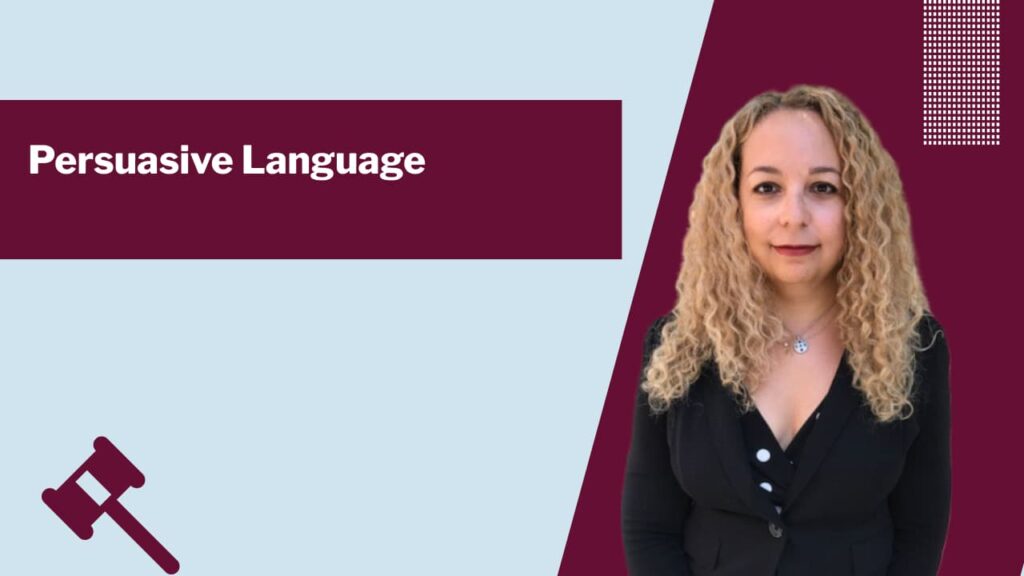
In the realm of law, the power of persuasive language is akin to a well-crafted legal argument – it can be the difference between success and failure. Whether in the courtroom, the negotiation table, or even in written correspondence, lawyers who master the art of persuasion hold a distinct advantage. In this blog post, we’ll delve into five actionable steps for lawyers to enhance their persuasive language skills.
1. Understand Your Audience:
Effective persuasion begins with a deep understanding of your audience. In the legal field, this could be a judge, a jury, opposing counsel, or even your own client. Tailoring your language to resonate with the values, concerns, and expectations of your audience is crucial. Consider the legal jargon that may be appropriate for a judge but may alienate a layperson. Speak to the heart of the matter and adapt your tone to suit the context.
Action Step 1: Before any legal interaction, take a moment to analyze your audience. Consider their background, knowledge of legal matters, and any personal biases that may influence their perspective. Tailor your language accordingly.
2. Craft Clear and Concise Messages:
In the legal profession, clarity is paramount. Long-winded and convoluted arguments can dilute the impact of your message. Lawyers should strive for clarity and conciseness in their communication. Clearly articulate your main points and support them with precise and relevant details. Remember, a concise argument is not only easier to follow but is more likely to leave a lasting impression.
Action Step 2: Practice distilling complex legal arguments into succinct and comprehensible statements. Consider creating concise summaries of your cases or arguments and seek feedback on their clarity and impact.
3. Use Rhetorical Devices:
Rhetorical devices are powerful tools that can elevate the persuasiveness of your language. Techniques such as analogies, metaphors, and repetition can make your arguments more memorable and emotionally resonant. Be mindful of the tone and context in which you use these devices, ensuring they enhance rather than distract from your message.
Action Step 3: Experiment with incorporating rhetorical devices into your written and oral advocacy. Practice using metaphors to simplify complex legal concepts or employ repetition to emphasize key points. Gauge the impact on your audience.
4. Appeal to Emotions:
While the law is grounded in reason and logic, the power of emotional appeal should not be underestimated. Connecting with the emotions of your audience can humanize your arguments and make them more compelling. Share relatable stories, highlight the human impact of legal decisions, and use language that evokes empathy.
Action Step 4: Identify opportunities in your cases where emotional appeal can strengthen your arguments. Craft narratives that resonate with the emotions of your audience, making your legal arguments not only intellectually persuasive but emotionally compelling.
5. Continuously Hone Your Skills:
Persuasive language is not a static skill; it evolves with practice and feedback. Actively seek opportunities to refine your language, whether through mock trials, peer reviews, or continued legal education. Stay attuned to changes in legal rhetoric and adapt your approach to remain effective in diverse legal settings.
Action Step 5: Commit to ongoing professional development focused on persuasive communication. Attend workshops, seek mentorship, and actively seek feedback on your language and presentation style. Embrace a growth mindset that values continuous improvement.
In the competitive and dynamic field of law, the ability to persuasively communicate is a foundational skill. By understanding your audience, crafting clear messages, employing rhetorical devices, appealing to emotions, and committing to continuous improvement, you can elevate your persuasive language skills and enhance your effectiveness as a legal advocate. Mastering the art of persuasion is not just about winning cases; it’s about positively influencing perceptions and driving positive outcomes for your clients.